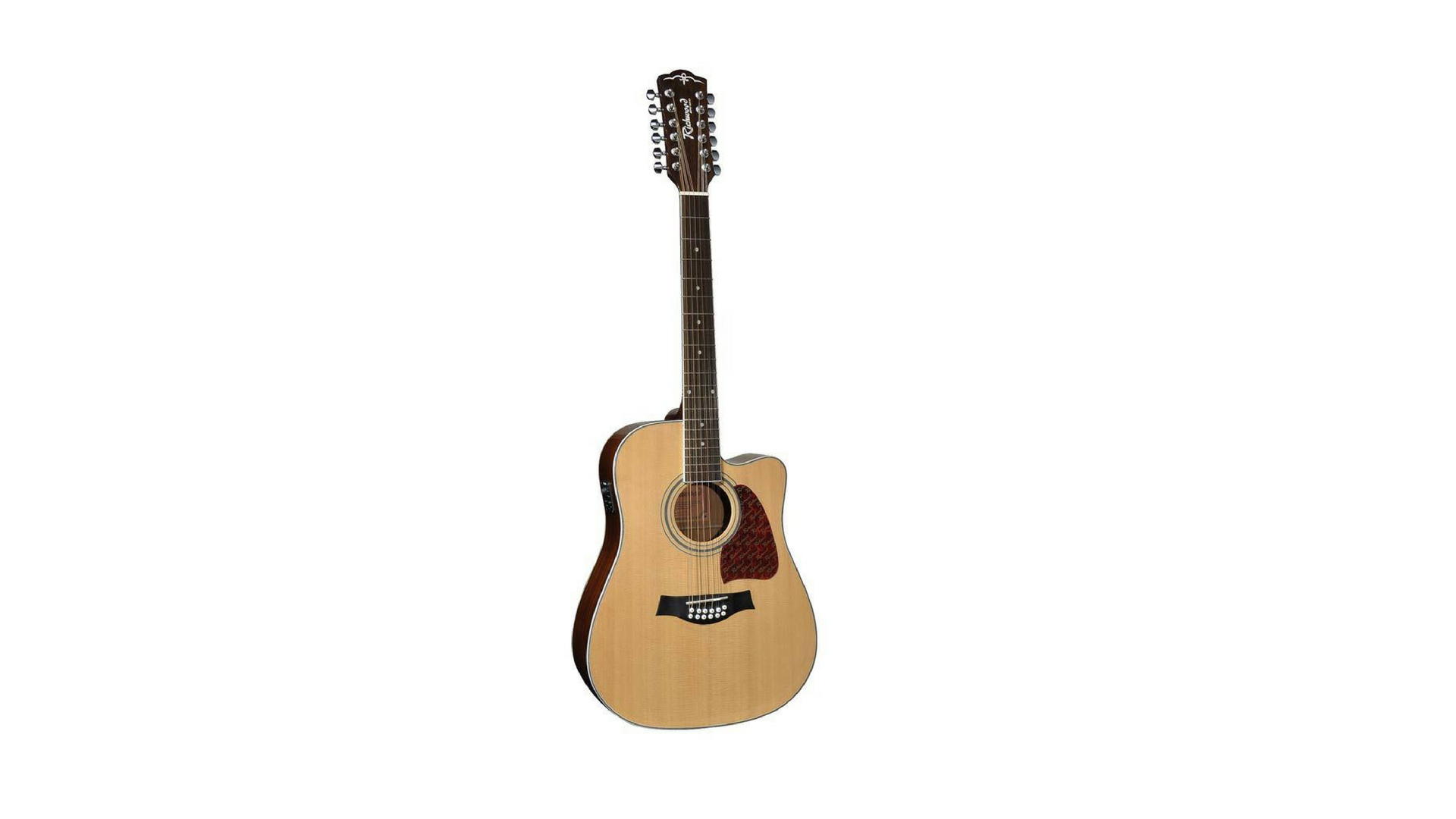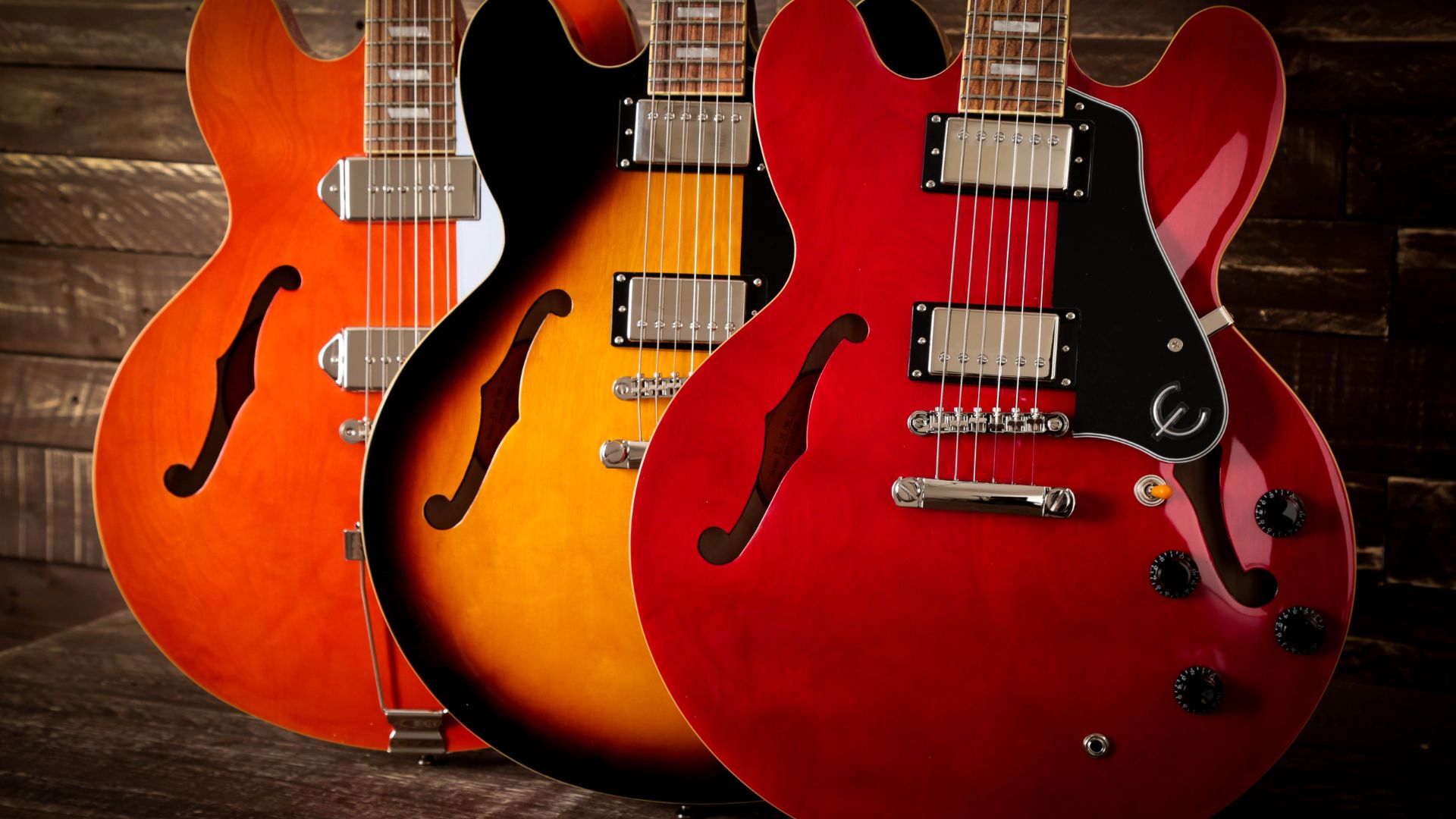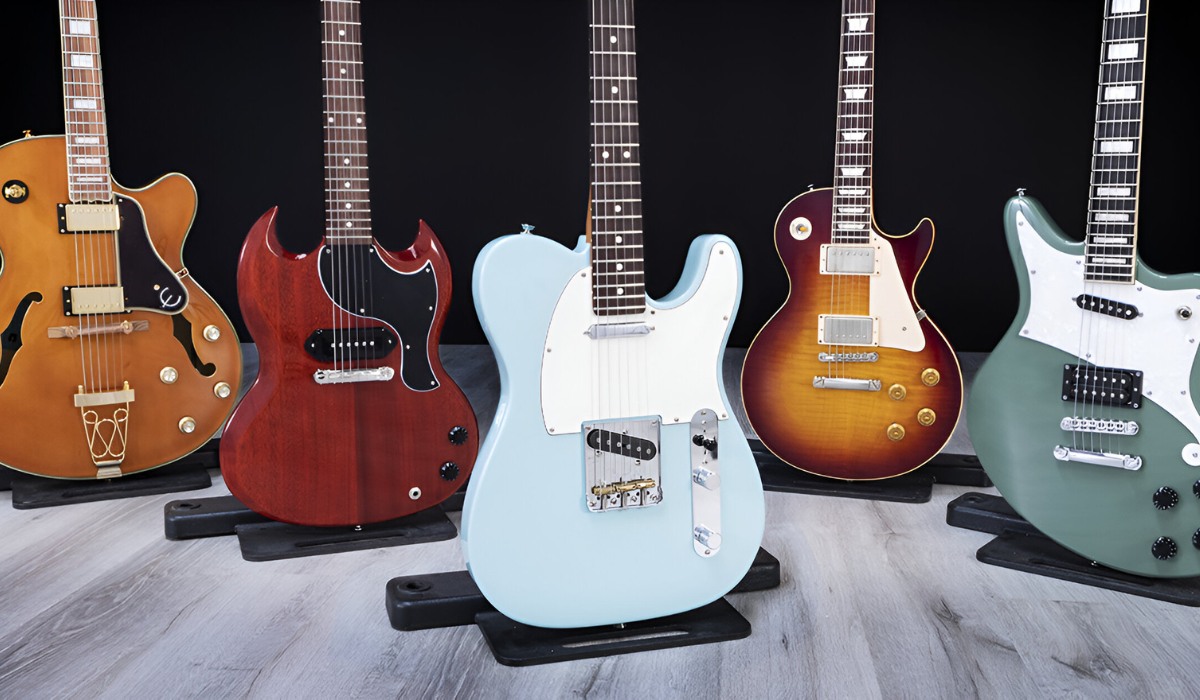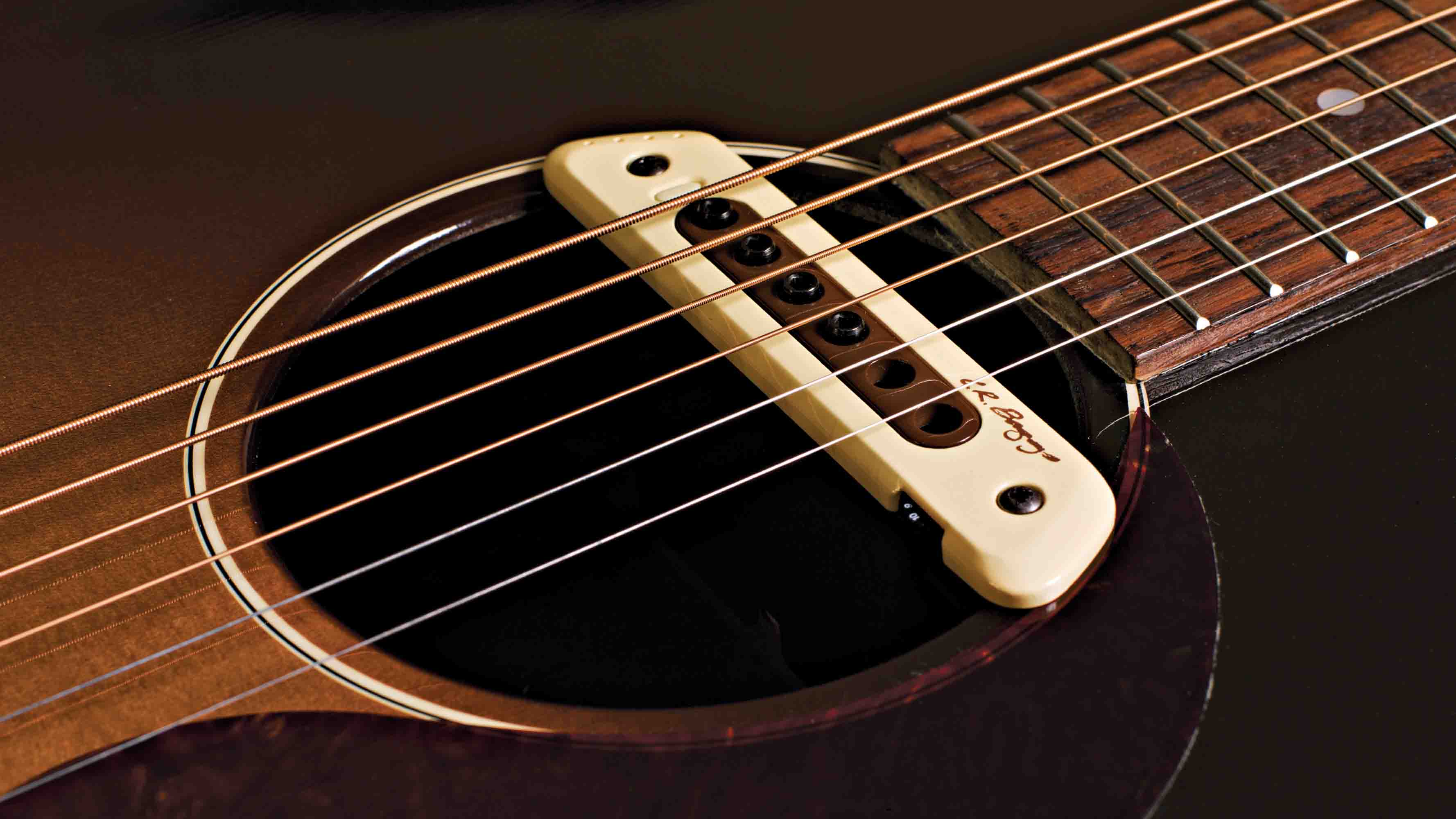Introduction
When it comes to playing the electric guitar, the type of strings you use can significantly impact your playing experience and the sound produced. Selecting the right strings is crucial for achieving the desired tone, playability, and durability. With a plethora of options available in the market, it can be overwhelming to choose the best strings for your electric guitar. This guide aims to demystify the various factors to consider when purchasing electric guitar strings, empowering you to make an informed decision based on your specific preferences and playing style.
Whether you are a seasoned guitarist or a beginner, understanding the nuances of electric guitar strings is essential for optimizing your musical performance. From the gauge and material to the coating and tone, each aspect plays a significant role in shaping the overall sound and feel of your instrument. By delving into these considerations, you can gain valuable insights into how different strings can complement your playing style and enhance the sonic capabilities of your electric guitar.
Navigating the diverse array of electric guitar strings can be akin to embarking on a musical journey, where each option presents a unique sonic landscape to explore. By delving into the intricacies of string gauge, material composition, and coating technologies, you can unlock a world of sonic possibilities, allowing you to tailor your instrument's sound to suit your artistic vision. Whether you prefer the warmth of nickel-wound strings or the bright articulation of stainless steel, the choices you make can profoundly impact your sonic identity as a guitarist.
As we embark on this exploration of electric guitar strings, it's important to approach the selection process with an open mind and a willingness to experiment. By embracing the diversity of options available, you can discover the perfect set of strings that resonates with your musical sensibilities, elevating your playing experience to new heights. So, let's embark on this sonic odyssey and unravel the intricacies of electric guitar strings, empowering you to make an informed and inspired choice for your musical endeavors.
Types of Electric Guitar Strings
Electric guitar strings come in various types, each offering distinct tonal characteristics and playability. Understanding the differences between these types is essential for selecting the strings that best align with your musical preferences and performance requirements. Here are the primary types of electric guitar strings:
- Nickel-Plated Steel: These strings are renowned for their balanced tone, offering a warm and articulate sound with a smooth feel under the fingers. The nickel plating enhances their durability and corrosion resistance, making them suitable for a wide range of playing styles.
- Stainless Steel: Known for their bright and crisp tonal qualities, stainless steel strings deliver enhanced clarity and sustain. They are particularly favored by players seeking a vibrant and cutting sound, making them well-suited for genres that require pronounced articulation, such as rock and metal.
- Pure Nickel: Offering a vintage-inspired tone, pure nickel strings deliver a warm and mellow sound, reminiscent of classic electric guitar recordings from the mid-20th century. Their smooth feel and rich harmonic content make them a popular choice for blues, jazz, and retro rock styles.
- Cobalt: Cobalt strings are engineered to provide a powerful and dynamic response, with an emphasis on clarity and definition. They offer a heightened magnetic interaction with the guitar’s pickups, resulting in a robust and expressive tonal output, making them ideal for players seeking a modern and punchy sound.
- Coated Strings: These strings feature a protective coating, such as polymer or nanoweb technology, designed to prolong their lifespan by shielding them from moisture, oils, and debris. Coated strings offer extended playability and a consistent tone, making them a practical choice for performers who require long-lasting performance.
Each type of electric guitar string possesses unique sonic attributes and tactile qualities, allowing players to tailor their instrument’s sound and feel to suit their artistic vision. By exploring the sonic nuances of these string types, you can identify the ideal set that resonates with your musical expression and elevates your playing experience.
Gauge
The gauge of an electric guitar string refers to its thickness, typically measured in thousandths of an inch. The gauge directly impacts the tension, playability, and tonal characteristics of the strings, making it a crucial consideration for guitarists seeking to achieve their desired sound and feel. Electric guitar strings are available in various gauges, with the most common sets ranging from light to heavy. Understanding the implications of different gauges can empower you to select the strings that best complement your playing style and sonic preferences.
Light Gauge: Light gauge strings, often denoted as 9-42 or 10-46, offer lower tension and easier bending, making them well-suited for lead guitar playing and styles that demand nimble fingerwork. These strings facilitate effortless fretting and bending, allowing for expressive vibrato and fluid melodic passages. Additionally, light gauge strings can produce a brighter and more articulate tone, ideal for genres such as pop, rock, and blues.
Medium Gauge: Medium gauge strings, such as 11-49 or 11-52, strike a balance between playability and robust tone. With slightly higher tension than light gauge strings, they offer enhanced sustain and a fuller sound, making them suitable for rhythm playing and genres that require a blend of power and articulation, such as classic rock and alternative music.
Heavy Gauge: Heavy gauge strings, often labeled as 12-54 or 13-56, provide maximum tension and durability, delivering a rich and resonant tone with extended sustain. These strings are favored by players who prioritize a thick and powerful sound, particularly in drop tunings and aggressive playing styles like metal and hard rock. While heavy gauge strings demand greater finger strength, they offer a commanding presence and formidable sonic depth.
By carefully considering the gauge of electric guitar strings, you can tailor the instrument’s response to suit your playing dynamics and sonic aspirations. Whether you seek effortless bending, robust sustain, or commanding power, selecting the appropriate gauge can significantly enhance your musical expression and performance capabilities.
Material
The material composition of electric guitar strings plays a pivotal role in shaping their tonal characteristics, durability, and feel. Different materials offer distinct sonic profiles and performance attributes, allowing guitarists to fine-tune their instrument’s sound to align with their musical preferences. Understanding the properties of various string materials is essential for making an informed choice that complements your playing style and artistic vision.
Steel: Steel is a prevalent material used in electric guitar strings, prized for its bright and articulate tonal qualities. Stainless steel strings are renowned for their crisp and clear sound, making them ideal for genres that demand precise articulation, such as rock, metal, and fusion. Additionally, steel strings offer robust durability and resistance to corrosion, ensuring consistent performance over extended periods of playing.
Nickel: Nickel-wound strings are celebrated for their balanced tonal character, blending warmth and clarity to deliver a versatile sonic palette. These strings produce a smooth and mellow sound with a well-defined midrange, making them suitable for a wide range of musical styles, including blues, jazz, and classic rock. The nickel composition enhances the strings’ flexibility and responsiveness, contributing to a comfortable playing experience.
Cobalt: Cobalt strings represent a modern innovation in string technology, designed to offer enhanced magnetism and dynamic response. The use of cobalt results in a stronger magnetic interaction with the guitar’s pickups, yielding a powerful and defined sound with extended sustain. Cobalt strings are favored by players seeking a contemporary and expressive tonal character, making them well-suited for genres that demand clarity and punch.
Pure Nickel: Pure nickel strings harken back to the classic electric guitar tones of the mid-20th century, delivering a warm and vintage-inspired sound. These strings exhibit a smooth feel and rich harmonic content, evoking the sonic aesthetics of blues, jazz, and retro rock. Pure nickel strings offer a mellow and rounded tonal profile, ideal for musicians seeking to capture the essence of bygone musical eras.
By considering the material composition of electric guitar strings, you can sculpt your instrument’s sonic identity, tailoring its tonal nuances to reflect your artistic sensibilities. Whether you prioritize brightness, warmth, clarity, or vintage character, the diverse array of string materials empowers you to craft a personalized sonic signature that resonates with your musical expression.
Coating
Coated electric guitar strings feature a protective layer applied to the metal winding, offering enhanced longevity and consistent performance. The coating serves as a barrier against moisture, oils, and debris, mitigating the effects of corrosion and extending the lifespan of the strings. By understanding the implications of coating technologies, guitarists can make informed choices that align with their playing frequency, performance requirements, and tonal preferences.
Polymer Coating: Polymer-coated strings are engineered to resist corrosion and preserve their tonal clarity over prolonged use. The polymer layer shields the strings from environmental elements and finger oils, preventing the accumulation of debris and preserving the strings’ bright and articulate sound. Additionally, polymer-coated strings offer a smooth feel and reduced finger squeak, enhancing the overall playability for performers seeking a polished and consistent performance.
Nanoweb Coating: Nanoweb-coated strings feature an ultra-thin protective layer that encapsulates the metal windings, providing a natural feel and crisp tone. The nanoweb coating technology allows the strings to vibrate freely, preserving their inherent brightness and sustain while safeguarding them from the detrimental effects of oxidation and contamination. Nanoweb-coated strings are favored for their long-lasting performance and smooth playability, making them an ideal choice for touring musicians and studio recording applications.
Polyweb Coating: Polyweb-coated strings utilize a thicker polymer coating, offering a warm and responsive feel with extended durability. The polyweb coating imparts a smooth texture to the strings, reducing finger noise and enhancing the playing comfort. These strings deliver a balanced and mellow tone, ideal for genres that benefit from a rich and nuanced sonic character, such as folk, country, and acoustic-oriented styles adapted for electric guitar.
Optiweb Coating: Optiweb-coated strings feature a thin and natural-feeling coating that provides a crisp and articulate sound with a resilient lifespan. The Optiweb technology preserves the strings’ high-end clarity and smooth feel, allowing for expressive playing dynamics while mitigating the accumulation of grime and sweat. These strings are well-suited for players seeking a vibrant and consistent tone, making them an excellent choice for stage performances and recording sessions.
By considering the coating options available for electric guitar strings, you can select a set that aligns with your playing style, environmental conditions, and tonal objectives. Whether you prioritize longevity, playability, or tonal preservation, the diverse array of coating technologies empowers you to optimize your sonic experience and performance longevity.
Durability
The durability of electric guitar strings is a crucial factor that directly impacts their lifespan, maintenance requirements, and overall performance consistency. Selecting strings with robust durability is essential for ensuring reliable playability, tonal integrity, and cost-effectiveness over extended periods of use. By examining the factors that influence string durability, guitarists can make informed choices that align with their playing frequency, performance demands, and environmental conditions.
Corrosion Resistance: Strings with enhanced corrosion resistance are designed to withstand the detrimental effects of moisture, oils, and atmospheric contaminants. Corrosion-resistant coatings, such as polymer, nanoweb, and polyweb technologies, provide a protective barrier that shields the metal windings from oxidation, preserving the strings’ tonal clarity and playability. Additionally, materials like stainless steel and coated nickel alloys exhibit inherent resistance to corrosion, ensuring prolonged durability in diverse playing environments.
Tensile Strength: The tensile strength of electric guitar strings influences their resilience to tension and bending forces, directly impacting their resistance to breakage and deformation. Strings engineered with high tensile strength can endure rigorous playing techniques, aggressive bending, and frequent tuning adjustments without compromising their structural integrity. Materials like cobalt and certain stainless steel alloys offer exceptional tensile strength, making them suitable for demanding playing styles and extended performance durations.
Coating Integrity: The integrity of the protective coating applied to strings significantly contributes to their durability and resistance to wear. Coated strings with robust coating adhesion and uniform coverage exhibit prolonged longevity, maintaining their tonal characteristics and playability over an extended lifespan. Advanced coating technologies, such as nanoweb and Optiweb, are engineered to preserve the strings’ integrity and sonic performance, offering enduring durability for players seeking consistent tone and feel.
Environmental Resilience: Strings that demonstrate resilience to environmental factors, such as humidity, temperature fluctuations, and airborne particulates, exhibit enhanced durability in diverse playing environments. Materials and coatings that mitigate the effects of environmental stressors contribute to prolonged string lifespan and consistent performance, making them suitable for touring musicians, outdoor performances, and studio recording applications.
By evaluating the durability attributes of electric guitar strings, you can identify sets that offer the longevity, reliability, and performance consistency required for your musical endeavors. Whether you prioritize corrosion resistance, tensile strength, or environmental resilience, selecting durable strings empowers you to maintain optimal playability and tonal integrity throughout your musical journey.
Tone
The tonal characteristics of electric guitar strings play a pivotal role in shaping the instrument’s sonic identity, articulation, and expressive capabilities. Different string materials, gauges, and coatings contribute to a diverse spectrum of tonal nuances, allowing guitarists to sculpt their desired sound and musical expression. By understanding the factors that influence string tone, you can make informed choices that align with your sonic preferences, playing style, and artistic vision.
Brightness: The brightness of electric guitar strings refers to their high-frequency content and articulation, manifesting as a sparkling and clear tonal presence. Stainless steel strings are renowned for their inherent brightness, offering crisp and cutting treble frequencies that enhance note definition and chord articulation. Players seeking vibrant and articulate tonal qualities often favor stainless steel strings for genres that demand pronounced high-end clarity, such as rock, metal, and fusion.
Warmth: Warmth in string tone encompasses a rich and rounded midrange presence, imparting a smooth and mellow sonic character to the instrument. Nickel-wound strings and pure nickel strings are prized for their warm tonal attributes, delivering a balanced blend of fundamental frequencies and harmonic overtones. Guitarists seeking vintage-inspired warmth and expressive midrange textures often gravitate toward nickel-based strings for blues, jazz, and classic rock styles.
Sustain: Sustain refers to the length of time a note resonates after being plucked, contributing to the instrument’s overall sonic depth and expressive potential. Electric guitar strings crafted from materials with high magnetic permeability, such as cobalt and certain stainless steel alloys, offer extended sustain and dynamic response. These strings facilitate prolonged note decay and harmonic richness, allowing for expressive phrasing and atmospheric textures in various musical contexts.
Clarity: String clarity encompasses the transparency and definition of individual notes and chords, enabling precise articulation and note separation. Coated strings, such as those featuring nanoweb and Optiweb technologies, maintain tonal clarity by preserving the strings’ inherent brightness and sustain while mitigating the accumulation of debris and oxidation. This results in consistent tonal articulation and note definition, making coated strings an optimal choice for players seeking enduring tonal clarity and expressive dynamics.
By considering the tonal attributes of electric guitar strings, you can tailor your instrument’s sonic palette to reflect your musical sensibilities and performance aspirations. Whether you prioritize brightness, warmth, sustain, or clarity, the diverse array of string characteristics empowers you to craft a personalized sonic signature that resonates with your artistic expression and musical identity.
Price
When considering electric guitar strings, the price point is a significant factor that influences the accessibility and feasibility of different string options. The cost of strings can vary based on factors such as material composition, coating technologies, brand reputation, and manufacturing processes. Understanding the relationship between price and string attributes can assist guitarists in making informed decisions that align with their budgetary constraints and performance requirements.
Standard Uncoated Strings: Standard uncoated electric guitar strings, crafted from traditional materials such as nickel and stainless steel, are often available at a moderate price point, making them an economical choice for musicians seeking reliable performance and tonal versatility. These strings offer a balanced blend of affordability and sonic capabilities, catering to a wide range of playing styles and musical genres without imposing a substantial financial burden.
Coated Strings: Coated electric guitar strings, featuring advanced coating technologies such as nanoweb and Optiweb, typically command a higher price due to their enhanced longevity, tonal preservation, and playability. The application of protective coatings adds value to the strings by prolonging their lifespan and maintaining consistent performance over extended periods, making them a practical investment for performers who prioritize durability and tonal integrity.
Premium Materials and Innovations: Strings crafted from premium materials, such as cobalt and specialized alloy blends, often come with a higher price tag due to their advanced sonic characteristics, dynamic response, and tonal sophistication. Innovations in string manufacturing, including proprietary winding techniques and material enhancements, contribute to the premium pricing of strings that offer exceptional tonal expressiveness and performance longevity.
Brand Reputation and Packaging: The reputation of string manufacturers and the packaging presentation can also influence the price of electric guitar strings. Established brands known for their commitment to quality control, consistency, and technological advancements may position their strings at a premium price point, reflecting the brand’s heritage and dedication to delivering exceptional sonic capabilities. Additionally, specialized packaging, such as environmentally friendly materials or protective enclosures, can contribute to the perceived value and pricing of strings.
By evaluating the price considerations associated with electric guitar strings, musicians can identify options that offer a harmonious balance between affordability and performance attributes. Whether prioritizing cost-effectiveness, durability, or sonic sophistication, understanding the pricing dynamics empowers guitarists to make informed choices that resonate with their musical aspirations and financial parameters.
Conclusion
Exploring the diverse landscape of electric guitar strings reveals a multitude of factors that influence their sonic characteristics, playability, and durability. From the choice of materials and coatings to considerations of gauge, tone, and price, each element contributes to the overall performance and expressive potential of the instrument. As guitarists navigate the myriad options available, understanding the nuances of electric guitar strings empowers them to make informed decisions that align with their artistic vision and performance requirements.
The selection of electric guitar strings is inherently personal, reflecting the unique sonic preferences, playing style, and musical aspirations of each guitarist. By delving into the intricacies of string gauge, material composition, and coating technologies, players can tailor their instrument’s sound and feel to suit their individual sensibilities, unlocking a world of sonic possibilities and expressive capabilities.
Whether seeking the vibrant articulation of stainless steel strings, the warm resonance of pure nickel, or the enduring performance of coated technologies, the array of options available allows guitarists to sculpt their sonic identity with precision and intention. The considerations of durability, tonal attributes, and price dynamics further empower musicians to navigate the diverse array of strings, ensuring that their chosen sets complement their playing style and performance longevity.
As guitarists embark on their sonic odyssey, the journey of selecting electric guitar strings becomes a harmonious fusion of artistry and technical discernment. Each set of strings represents an opportunity to shape the instrument’s sonic landscape, inviting players to explore new tonal horizons and unlock their expressive potential. With a wealth of options at their disposal, guitarists can confidently select strings that resonate with their musical sensibilities, enhancing their playing experience and sonic identity.
Ultimately, the world of electric guitar strings is a realm of endless sonic exploration, where each set represents a unique sonic palette waiting to be unleashed. By embracing the diversity of options and understanding the intricacies of string attributes, guitarists can embark on a journey of sonic self-discovery, harnessing the power of strings to articulate their musical narratives and elevate their artistic expression.

























